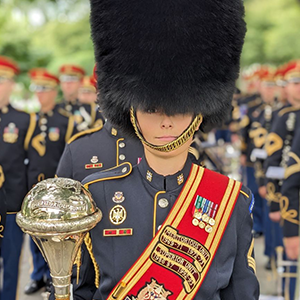A Look Back at the Beehive
 If you can, think back to Pittsburgh circa 1991. Sophie Masloff was mayor. Rollier’s was still in the big red barn on McFarland Road. Mt. Lebanon had a junior high school. And if you wanted a cappuccino, you probably went to La Prima Espresso.
If you can, think back to Pittsburgh circa 1991. Sophie Masloff was mayor. Rollier’s was still in the big red barn on McFarland Road. Mt. Lebanon had a junior high school. And if you wanted a cappuccino, you probably went to La Prima Espresso.
There was an Oakland scene, with The Decade, The Upstage and not far away, Graffiti and The Electric Banana. But if you were in the downtown dorms at Point Park College (now University), well…
“We had a Rax, a Subway and a McDonald’s on Forbes,” recalled David Rullo, who was a Point Park student at the time. Downtown was dead after dark, and back then, there was little reason to cross a bridge to the South Side.
That was until business partners Scott Kramer and Steve Zumoff, fresh from a cross-country road trip, decided that Pittsburgh needed a coffeehouse. The Beehive opened at 1329 East Carson Street in February of 1991.
Rullo was a hardcore Beehive regular. He has gone on to a successful local media career, including stints at KQV, WTAE and the Pittsburgh Jewish Chronicle, where he’s a senior staff writer. He spins the saga of the Beehive in his new book, Gen X Pittsburgh: The Beehive and the ‘90s Scene.
“It’s an amazing story,” Rullo said. “People were telling them, ‘Nobody’s going to pay three or four dollars for coffee.’”
Kramer and Zumoff thought otherwise. They brought in a woman who had worked at the first Starbucks in Chicago, and knew her way around a milk frother. They contracted with Elizabeth Boyd, Uptown Coffee’s founder, to provide baked goods. Local artists painted the walls. Mismatched tables and chairs were found. This being the ’90s, ashtrays were plentiful; “They were overflowing,” Rullo recalled.
But it was the regulars, mostly artists, musicians, students, and employees who made the Beehive what it was. It became home turf for students from Point Park, the Art Institute of Pittsburgh, and Pittsburgh Filmmakers. “Everyone I knew was a filmmaker,” Rullo recalled.
Many Beehive habitues have gone on to greater success, including painter Michael Lotenero, who has a studio in the Strip District, and Rick Bach, an artist and musician whose work can be seen in Mad Mex restaurants. Bach and Lotenero also designed the Beehive Lady logo. Callie Shell, a former Pittsburgh Press staffer who left to serve as Vice President Al Gore’s official photographer, could often be found, Rullo said. Mandy Kivowitz-Delfaver, a local jazz singer known as Phat Man Dee, worked and performed at the Beehive.
Before they became one of the biggest bands of the 1990s, the members of Rusted Root were regulars.“We did one of our only acoustic shows there,” said Jim Donovan, Rusted Root’s drummer whose current band, The Sun King Warriors, performs regionally. “It was a place that felt like it was built for creatives. It felt like having a little bit of NYC on the Southside.”
People came in for the coffee. “They created coffee culture in the city,” Rullo said. Then they stayed for the music, poetry readings, and pinball machines.
In its heyday, the Beehive had two locations. In 1995, Kramer and Zumoff took over the old King’s Court Theater in Oakland. They stuck with the Rocky Horror Movie midnight shows, but also presented independent movies and live concerts, until they closed in 2001. (It’s now a cell phone store.) And for awhile, the original South Side shop was open 24 hours a day; hard to imagine in these post-pandemic days when not even Eat n Park is open 24/7.
“To walk into the Beehive was to feel like you found your community,” Rullo said.
“There were different groups of people, but there was a lot of cross-pollination,” he added. “You went there to be part of that.”
The Beehive “helped re-develop the South Side,” Rullo said. “It helped the community out of its post-industrial morass.” In the Beehive’s wake came Slackers, the hipster clothing store, which opened across the street later in 1991. Dee’s Cafe had been on East Carson since 1959, but it gained a new generation of drinkers. Other retailers and (many) bars followed.
The Beehive acquired a liquor license in 2010, which changed the vibe. But WiFi and laptops killed it, arguably.
Patrons weren’t going in to talk to each other, Rullo noted. “The culture didn’t exist anymore. People were looking at their phones.”
Although the Beehive helped start the Carson Street renaissance, the scene has evolved from espresso and Doc Martens to White Claw and stilettos; from Gen X to millennial to Gen Z, in other words.
The Beehive closed its doors just short of its 28-year anniversary, in January of 2019. Kramer and Zumoff had gone on to open the Tiki Lounge and Double Wide Grill, both still South Side staples.
Writing the Beehive history was “a passion project for me,” Rullo said.
“I think it’s so Gen X specific,” Rullo said. “And (28 years) is probably the proper lifespan.”
“Gen X Pittsburgh: The Beehive and the ‘90s Scene,” from Arcadia Publishing, is available for pre-order on Amazon.com. It will be released on October 30.





